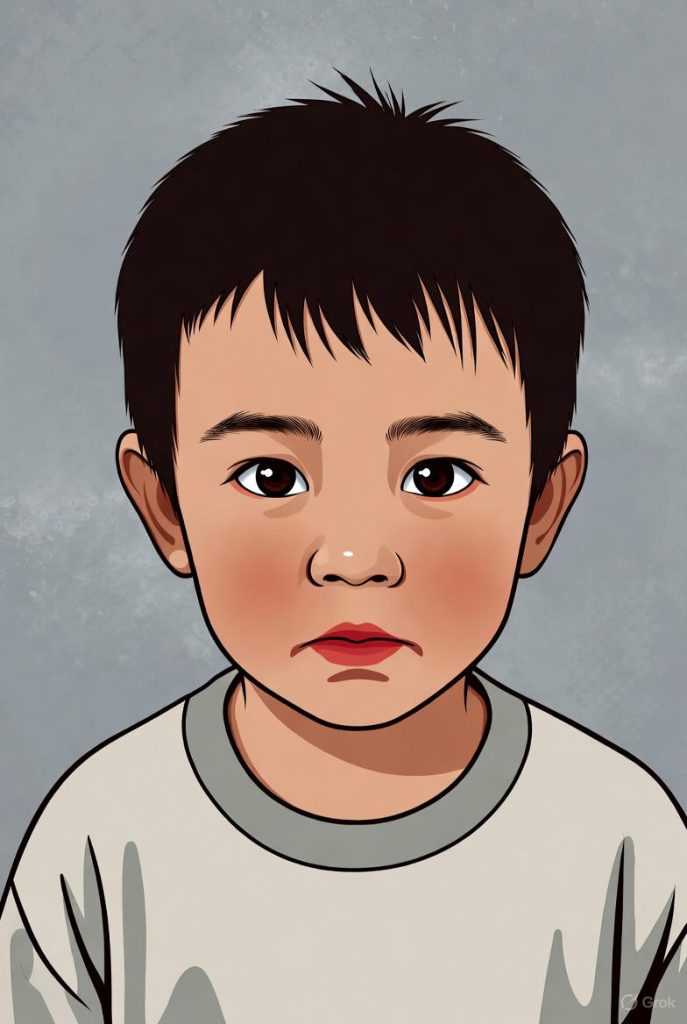- Home
- Sexual Abuse
- Grooming
- Child Grooming
Child Grooming
- October 22, 2025
-
Sarah Miller
- Fact Checked By Our Attorneys
Child grooming is a manipulative process in which an adult or older individual exploits a child’s trust to prepare them for sexual abuse. Unlike a single act, grooming is a gradual strategy designed to lower a child’s defenses, gain access to their emotions, and eventually cross boundaries that can lead to physical contact or exploitation. In many cases, grooming may also happen online, where predators use social media, gaming platforms, or messaging apps to build secretive relationships with children.
Recognizing grooming early is crucial because it allows parents, caregivers, and institutions to intervene before abuse escalates into more severe forms, including child sexual abuse or the creation of child pornography.
Whether it takes place in person or through online child grooming, the goal of sexual predators is always the same to manipulate a child into silence while preparing them for exploitation.
To better understand how grooming happens and how to spot the warning signs, you can learn more about Grooming.
No Win, No Fee. Let the Best Sex Abuse Attorneys Fight for your Compensation!
Key Takeaways:
Child grooming is a manipulative process where predators build trust with a child or their family to prepare the child for sexual abuse.
Early recognition of grooming behaviors is critical for prevention, particularly in online spaces where offenders often accelerate the process.
Grooming can cause lasting harm, including guilt, self-blame, difficulty forming trusting relationships, and mental health struggles such as anxiety or self-harm.
Parents, communities, and institutions all play a vital role in child protection through education, vigilance, and strong reporting systems.
Find out your eligibility in 2 minutes
If your child has been a victim of sexual abuse, you are not alone. Many families face the same fear, pain, and search for justice. Our team can connect you with experienced child sexual abuse attorneys who understand these sensitive cases, protect your child’s rights, and guide your family through filing a legal claim for the compensation and accountability you deserve.
Begin your free and confidential case review today.

What Does Grooming a Child Mean?
Grooming a child means when an older person deliberately builds a trusting relationship with a young person or their family for the purpose of sexual exploitation or abuse. Unlike normal adult–child interactions that are supportive and nurturing, grooming behaviors are manipulative and designed to lower a child’s defenses over time.
Offenders may spend weeks, months, or even years gaining access to the child, creating a special relationship, and gradually introducing inappropriate sexual language, physical contact, or exposure to sexual content. The ultimate goal of child grooming is to make the child feel responsible for the relationship, confuse them about what is normal, and make it difficult for them to speak out.
It is important to understand that not every close relationship between a child and an adult is predatory. Many safe environments such as schools, youth serving organizations, and community programs encourage mentoring and healthy adult guidance. The red flag lies in secretive behavior, unusual emotional connection, or when a child feels uncomfortable or pressured.
“Child grooming is a calculated process where trust is built only to be betrayed.”
Stages of Child Grooming Behaviours
Experts often describe the grooming process as following five key stages, though not every situation looks exactly the same. First, the offender begins targeting the child, often focusing on vulnerable victims such as socially isolated young people or those with poor parental relationships.
Next, they work on gaining trust, not only with the child but also with the child’s family, creating the image of a safe and caring relationship. The third stage involves meeting emotional and physical needs, where the abuser may provide gifts, attention, or time that makes the child feel valued and special.
The fourth stage is isolation, where the abuser gradually separates the child from other adults, parents, or protective family members, making it easier to introduce inappropriate sexual topics, behaviors, or physical touch.
Finally comes the stage of abuse and secrecy, where sexual contact, sexual exploitation, or other forms of child sexual abuse occur, and the offender pressures the child to keep the relationship hidden. This secrecy often makes them feel responsible or guilty, which keeps them silent.
Child grooming can happen both in person and through online grooming, where predators use digital platforms to develop trust, spend time with children, and normalize sexualized conversations. Understanding these stages can help adults detect sexual grooming early, spot warning signs, and create environments that prioritize child protection.
While the five stages provide a framework, in reality they often overlap and do not always follow a linear order. Offenders may accelerate certain steps, particularly online, making grooming harder for parents to detect and giving predators quicker access to potential victims.
No Win, No Fee. Let the Best Sex Abuse Attorneys Fight for your Compensation!
Signs of Child Grooming
Recognizing the signs of grooming early is one of the most effective ways to protect children from sexual abuse. Children who are being groomed may show sudden behavioral changes, such as becoming secretive, withdrawn, or unusually attached to a particular adult. Parents may also notice unexplained gifts, extra money, or knowledge of sexual acts that seems inappropriate for their age. These red flags often point to a grooming process where a child is being prepared for future sexual abuse.
Adults who engage in grooming behaviors also display warning signs. They may give a child excessive attention, insist on spending time alone with them, or slowly break physical and emotional boundaries under the guise of a “special relationship.” Some may attempt to gain access to the child’s life by befriending parents, family members, or other adults in the child’s circle. While not every act of kindness is predatory, repeated secrecy, isolation tactics, or attempts to normalize inappropriate sexual content are strong indicators of grooming.
If you suspect abuse or recognize concerning behaviors, it is important to take action immediately. Understanding these signs not only helps in protecting one child, but also prevents offenders from harming vulnerable children in youth serving organizations, family units, or communities. Learn more about Signs of Grooming.

Online Child Grooming
In today’s digital world, online grooming has become one of the most alarming threats to child safety. Social media platforms, gaming networks, and private messaging apps provide offenders with easy access to young people, often without the knowledge of parents or other adults. Through these channels, predators may send friend requests, offer gifts, or use video chats to establish trust and emotional connection. This is known as cyber grooming, a process where abusers exploit online relationships to sexually abuse children or prepare them for in-person meetings.
Online child grooming often blurs boundaries because children may see the attention as friendship or even a romantic relationship. Offenders may gradually introduce inappropriate sexual language, request images of the naked body, or pressure the child into keeping secrets. These interactions can escalate into online sexual exploitation and cyber abuse, leaving the child feeling responsible, trapped, and fearful of speaking out.
Parents and caregivers can help protect children by monitoring online activity, educating them about the risks of engaging with strangers, and fostering open communication about online interactions. Recognizing the warning signs such as a child spending excessive time online, becoming defensive about digital conversations, or suddenly receiving gifts from unknown sources can help adults detect sexual grooming early.
FREE!
Find out if you're eligible and may be eligible for compensation.
Get your Free Case Review and Maximize You Payout With the Help From Legal Claim Assistant.
Is Child Grooming Illegal and Considered a Criminal Offence?
In the United States, child grooming is considered a serious criminal offence even if no physical sexual abuse has taken place. The law recognizes that the grooming process itself is harmful because it involves manipulation, coercion, and the exploitation of a child’s trust in order to prepare them for future sexual abuse or sexual contact.
Federal law and most state statutes classify grooming behaviors, including online grooming, as crimes, particularly when they involve attempts to exploit a young person through communication, gifts, secrecy, or discussions of sexual content.
The exact penalties and definitions can vary across states. For example, the Texas Penal Code specifically addresses child grooming by criminalizing online solicitation of minors and other forms of sexual grooming, making it clear that adults who attempt to gain access to a child for abusive purposes can face prosecution even if sexual contact never occurs.
Other states have similar laws, though the terminology and sentencing guidelines may differ. What remains consistent across jurisdictions is that grooming behavior directed toward vulnerable children is recognized as an act of child abuse and carries serious legal consequences.
“Grooming hides behind kindness, making it harder for children to recognize danger.”
Effects of Grooming on Children
The effects of child grooming can be both immediate and long-lasting. In the short term, children may experience secrecy, confusion, fear, and feelings of shame, often believing they are somehow responsible for what is happening.
Because the offender typically creates a trusting relationship or special bond with the child, victims often feel conflicted and may struggle to disclose the abuse to parents, family members, or other adults. This emotional confusion is a powerful part of the grooming process and can silence a young person even in the face of clear warning signs.
Over time, the psychological and emotional damage caused by grooming can be profound. Survivors of child sexual abuse frequently develop post-traumatic stress disorder, depression, anxiety, and other mental health issues. Many also struggle with difficulties in forming trusting relationships, feelings of betrayal by adults, and ongoing fear of authority figures.
Grooming often leaves children struggling with guilt or self-blame, even though they are never at fault. Many find it difficult to build trusting relationships later in life. Over time, unresolved trauma can manifest as anxiety, self-harm, eating disorders, or other serious mental health challenges.
The trauma of grooming can impact every part of a child’s life, from their education and friendships to their long-term well-being. Understanding these effects is essential for child protection, as it reinforces why early detection of grooming behaviours and immediate intervention are so critical in preventing future abuse.
How to Prevent Child Sexual Abuse and Online Grooming
Preventing child grooming requires a proactive effort from parents, families, schools, and youth-serving organizations. Education is one of the most effective tools for protecting children. Teaching young people about body safety, personal boundaries, and the difference between appropriate and inappropriate behavior helps them recognize when something feels wrong.
Children who understand concepts such as informed consent and personal space are better equipped to identify red flags and speak up when faced with sexual grooming attempts.
Parental involvement also plays a crucial role in prevention. Parents and guardians should remain engaged in their child’s life, monitor online activities, and pay attention to sudden behavioral changes that may signal grooming behaviours.
Open conversations about online grooming, sexual exploitation, and safe relationships can empower children to share concerns without fear or shame. Families that foster trust create safer environments where children feel supported rather than isolated.
Institutions such as schools, churches, sports programs, and camps also carry a responsibility to protect children. Effective prevention requires strict background checks, regular training for staff on recognizing grooming behavior, and clear reporting systems for suspected abuse.
The Role of Communities in Preventing Grooming
Communities play a vital role in creating safe environments where grooming behaviors are less likely to go unnoticed. Schools, churches, sports teams, and other youth-serving organizations can implement proactive measures to protect children. Mandatory training programs for staff and volunteers ensure that everyone understands the warning signs of grooming and knows how to respond appropriately. Comprehensive background checks further reduce the risk by screening individuals before they are given access to children.
In addition, clear and accessible reporting mechanisms should be established so that any concerns can be raised confidentially and addressed without delay. When these steps are consistently applied, institutions send a strong message that child safety is a priority and that grooming will not be tolerated.
“The silence around grooming allows it to thrive—awareness is our strongest defense.”
What to Do if You Suspect Grooming
Discovering suspected grooming in a child’s life can be overwhelming, but taking calm and deliberate steps is essential to ensure the child’s safety. The first step is to remain composed, as children who are confronted with anger or panic may shut down or feel responsible for the abuse. Instead, it is important to gently document what has been observed, including changes in the child’s behavior, concerning communications, or interactions with adults that appear inappropriate.
Reporting suspected abuse to the appropriate authorities is critical. Schools, camps, churches, and other youth-serving organizations have mandatory reporting requirements, which means that staff members are legally obligated to inform child protection services or law enforcement when they suspect grooming or sexual abuse.
Parents and family members should not hesitate to contact local agencies if they believe a child is at risk. Seeking professional counseling is also recommended to address the emotional impact on the young person and provide them with the support they need.
You can learn more about Grooming.
FREE!
Find out if you're eligible and may be eligible for compensation.
Get your Free Case Review and Maximize You Payout With the Help From Legal Claim Assistant.
Frequently Asked Questions About Child Grooming
What is child grooming?
Child grooming is a manipulative process in which an older person develops a relationship with a child to gain their trust and gradually prepare them for sexual abuse. The offender may spend time with the child, offer gifts, or create a special relationship that appears harmless at first but is actually designed to break boundaries. This deliberate process, sometimes described in the sexual grooming model, often includes isolating the child from parents or family members, encouraging secrecy, and exposing them to inappropriate sexual content or childlike activities that lead to exploitation.
What is a child grooming charge?
A child grooming charge refers to the criminal offence of attempting to establish a relationship with a child for the purpose of future sexual abuse or sexual exploitation. In many cases, law enforcement does not need to find evidence of physical sexual contact to bring charges. If authorities can show that an adult’s grooming behaviours were intended to sexually abuse a young person, the offender can face serious penalties, including imprisonment.
Is child grooming illegal in all states?
Yes, grooming is recognized as illegal throughout the United States, though the specific wording of statutes may differ from state to state. Some states, such as Texas, have explicit child grooming laws that criminalize online solicitation and attempts to develop trust with a minor for abusive purposes. Others may prosecute grooming under broader child abuse or sexual exploitation statutes. Regardless of how the law is written, courts consistently treat grooming as a criminal act because it places vulnerable children at risk of future sexual abuse.
What are the early warning signs of grooming?
Warning signs often appear in both the child’s behavior and the adult’s behavior. A child may become withdrawn, secretive, or suddenly display knowledge of sexual topics beyond their age. Adults who are grooming may attempt to spend excessive time with a child, isolate them from family, or blur physical and emotional boundaries. Recognizing these following signs early is key to protecting children, particularly those who are vulnerable victims or socially isolated.
How can parents protect their children online?
Parents can protect their child online by maintaining open conversations about internet safety, setting clear rules for gaming and social media use, and monitoring communications for red flags such as secretive chats, inappropriate images, or new online “friends” who are older. It is also important for parents to educate children on safe online behavior, reminding them that not everyone who initiates a relationship with a child online has good intentions. By creating safe environments and encouraging trust, parents reduce the risk of predators gaining access to potential victims.
Take Action If Grooming Is Suspected
If you suspect grooming, it is important to remember that you are not alone. Many families face this frightening reality, and with the right support, you can protect your child and hold predators accountable.
Survivors and parents should never feel ashamed for speaking out, as grooming is designed to manipulate both the child and their family unit. Recognizing the problem and taking early steps is the most effective way to prevent harm and safeguard a child’s future.
Legal support plays a critical role in these cases. Attorneys experienced in child sexual abuse understand how grooming behaviors develop, how to detect sexual grooming, and how to use found evidence to pursue justice against those responsible. With proper legal action, institutions and individuals who failed to provide safe environments can also be held accountable.
If you suspect grooming, get help today. Legal Claim Assistant connects you with attorneys who can protect your child’s rights and provide the guidance you need to take action.
You Deserve Justice. Let Us Help.
Speak with a trusted sexual abuse attorney who will stand by your side, protect your privacy, and fight for the compensation you deserve.
No Win, No Fee. Let the Best Sex Abuse Attorneys Fight for your Compensation!
Under 1 Minute
100% Free
Expert-Reviewed
Private & Secure
© 2025 Legal Claim Assistant. All Rights Reserved.
Terms of Service | Privacy Policy | Contact Us | Marketing Partners
Related Article

What Philips CPAP Machines Are Recalled and Why

